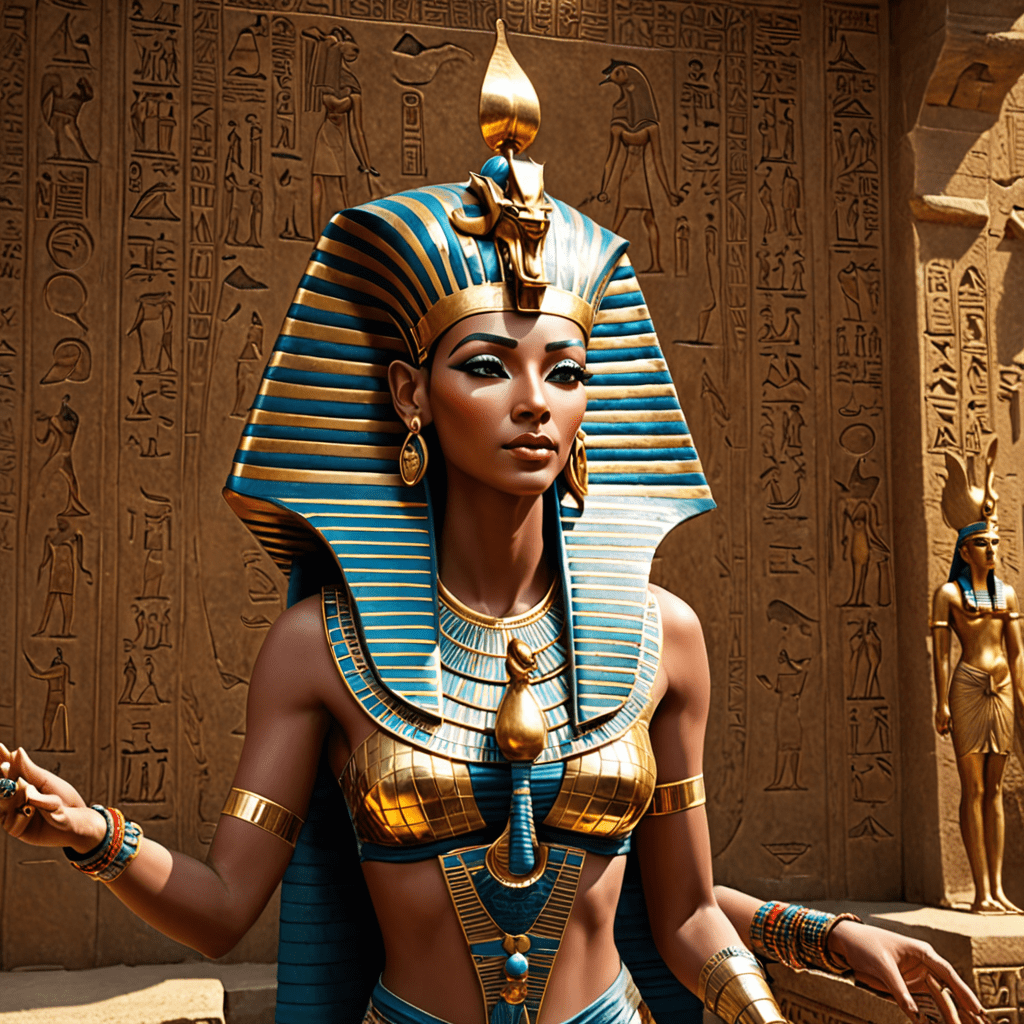The Myth of the Goddess Tefnut in Ancient Egypt
Introduction to Tefnut
In Ancient Egyptian mythology, Tefnut is a prominent goddess associated with moisture, rain, dew, and humidity. She is often depicted as a lioness or as a woman with the head of a lioness, symbolizing her fiercely protective nature.
Role and Symbolism
Tefnut is considered one of the original deities in Egyptian cosmology, having emerged from the primordial waters of Nun alongside her twin brother Shu, the god of air. Together, they were seen as the physical and metaphysical aspects of life. Tefnut’s essence represented the vital moisture needed for all living beings to thrive, making her a crucial figure in Egyptian agriculture and sustenance.
Mythological Stories
One of the most well-known myths involving Tefnut revolves around her temporary departure from Egypt due to a dispute with her father, Ra, the sun god. Mythology states that in her absence, the land suffered from drought and infertility, highlighting her essential role in maintaining order and balance.
Legacy and Worship
Throughout ancient Egypt, Tefnut was revered and worshipped in various forms. Temples dedicated to her existed, and rituals honoring her role in sustaining life were practiced. Her presence in artwork, texts, and religious ceremonies showcased the deep respect and reverence the ancient Egyptians held for her.
FAQ About the Myth of the Goddess Tefnut
Who is Tefnut in Ancient Egyptian mythology?
Tefnut is a prominent deity in Egyptian mythology, often depicted as the goddess of moisture, rain, and dew. She is associated with feminine aspects, representing fertility and life-giving properties.
What is the significance of Tefnut in Ancient Egyptian beliefs?
Tefnut plays a crucial role in Egyptian cosmology as a creator goddess. She, along with her brother Shu, are believed to have helped form the world and bring balance to the universe. Tefnut’s presence symbolizes renewal and the sustaining forces of nature.
How is Tefnut typically depicted in Ancient Egyptian art?
In art, Tefnut is commonly shown as a lioness-headed or lioness-bodied goddess. This feline representation symbolizes her ferocity and protective nature. Sometimes, she is also depicted as a woman with the head of a lioness, emphasizing her power and authority.
What is the story of Tefnut’s journey in Ancient Egyptian mythology?
According to Egyptian myth, Tefnut once left Egypt, causing chaos and drought. In her absence, her father, the sun god Ra, sent the god Thoth to bring her back. Thoth succeeded by convincing Tefnut that her return was crucial for maintaining order and balance in the




